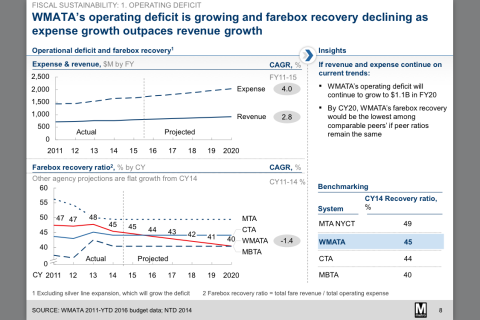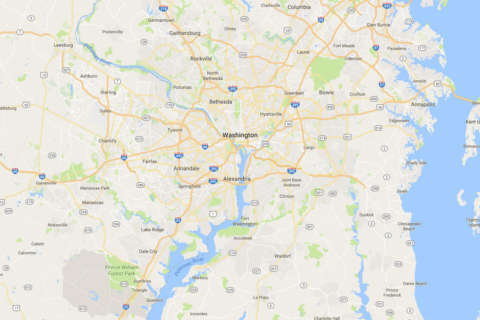WASHINGTON — After two weeks of shutdowns on the Blue and Yellow lines, Metro’s round-the-clock track work moves back to the Orange and Silver lines July 20-31. This is the third consecutive track work zone that begins in the middle of the week, so commuters need to plan ahead.
The work
Orange and Silver line trains will share a single track between East Falls Church and Ballston from Wednesday, July 20 through the Metro system’s closing Sunday, July 31.
Crews will work on the other track in the area that was not dealt with during the first round-the-clock work zone in June in the same area.
Similar to the first work zone, there will be significantly fewer rush-hour trains than usual at Orange and Silver line stations in Fairfax County and at East Falls Church, and there will be significantly fewer trains at the other end of the Silver Line between Largo Town Center and Stadium-Armory.
Metro plans to again run additional Orange Line trains to and from Ballston to make the service cuts less severe at stations in Arlington, D.C. and along the Orange Line in Prince George’s County.
After issues during the first track work zone, the head of Metrorail operations, Andrew Off, said Metro will run some extra eastbound trains through the single-tracking zone toward East Falls Church during the afternoon rush hour. The downside for riders heading in the other direction is that it comes at the expense of additional inbound trains from Ballston toward New Carrollton.
With the exception of those changes in the afternoon, Metro plans to run Orange Line trains to and from Vienna and Silver Line trains to and from Wiehle Reston-East only every 18 minutes each at rush hour.
Northern Virginia workarounds
Metro and regional transportation leaders urge riders who typically use stations west of Ballston to consider other transportation options and to avoid rush hour if possible.
For riders who drive to stations, alternatives include driving to Blue or Yellow Line stations instead, taking a commuter bus from one of the many park and rides across the region or using Virginia Railway Express Manassas Line service.
Riders who stick with Metro do have a number of options to get to or beyond Ballston where trains will run more frequently, but still not at regular rush-hour levels.
The Washington and Old Dominion Trail running alongside much of the Orange and Silver lines and some recently expanded Bikeshare docks make biking all or part of the way an attractive option for many riders. Fairfax County has even posted directions to and from the trail.
During the previous work zone in this area, Arlington County noted a significant increase in the number of people biking, and Alexandria leaders noted increases during the recent shutdowns of the Blue and Yellow lines.
For riders sticking with transit from the Vienna Metro station, Fairfax Connector plans special $4 express bus service to the Pentagon in the morning and back in the afternoon.
From Reston North Park and Ride, around the corner from Wiehle-Reston East, there is additional peak-direction service on Route 599 to the Pentagon. The special, added trips will not go to Pentagon City or Crystal City.
Riders from Reston and points west who do not opt for existing commuter or express buses could also go to the Herndon-Monroe Park and Ride to catch Metro’s 5A bus. In addition to regular direct service between Dulles Airport, the park and ride, Rosslyn and L’Enfant Plaza, there are some additional buses between Herndon-Monroe and L’Enfant. All 5A routes cost $7.
From Dunn Loring, Metro is adding service to the 2A bus route to and from East Falls Church and Ballston. Silver Line riders can also connect to Fairfax Connector routes to and from Tysons.
From East and West Falls Church, free shuttle buses, which could be crowded, connect riders to Ballston where trains are more frequent. There are also a number of regular bus routes that connect to Ballston, Rosslyn and other areas.
At Ballston, riders have the option of a number of bus routes or the additional rail service. Metro recommends riders boarding at Ballston use the trains originating there since those trains should have more space available.
Loudoun County Transit is shifting Metro-Connect routes 901 and 902 that usually pick up and drop off riders at West Falls Church to instead pick up and drop off at Ballston during this work zone. The adjusted schedules for July 20-29 to and from Broad Run Farms, Cascades, Our Lady of Hope and Lowes Island can be found here.
Schedules will not change for other Loudoun County routes.
Loudoun County Transit suggests that riders interested in taking commuter buses directly to D.C., Rosslyn, the Pentagon or Crystal City consider the 100 and 500 series routes that begin at the Telos, Ashburn North and Christian Fellowship Church park and ride lots since they tend to have seats available.
Prince George’s County workarounds
While Metro plans to run the same number of trains as usual between New Carrollton and D.C. during the morning rush, service to and from Largo Town Center is cut back about 47 percent due to the limited Silver Line service.
Riders who typically drive to the Blue or Silver line stations in Maryland may want to consider using Green Line or even Orange Line stops instead. There is no rush-hour track work scheduled on the Green Line during this surge.
In the afternoon, the less frequent eastbound trains from Ballston will likely cut down on service to New Carrollton to some degree.
If rail service does not work well, there are several bus connections from various stations to other Metrorail lines or bus transfer points that may work for specific commutes.
Other options include MARC trains from New Carrollton, Greenbelt, College Park or Riverdale or commuter bus routes.
Regional leaders are again urging people who choose to drive to carpool.
D.C. impact
The Blue and Silver line service cuts most significantly reduce service at Capitol Heights and Benning Road, but they also mean less rush hour service than usual at all stations served by the Orange, Blue and Silver lines between Rosslyn and Stadium-Armory.
Riders who often take those lines just a handful of stops to a downtown transfer station may want to consider walking, biking or taking a bus to the rail line that will bring them to their destination. For example, riders who get on at McPherson Square to transfer to the Green or Yellow line at L’Enfant Plaza could instead walk to Gallery Place.
Special extended rush hour parking restrictions implemented last month remain in effect in key corridors where D.C. expects could see increased traffic. Drivers should check street parking signs carefully.
What’s next
Red Line riders and Montgomery County begin August with their first direct hit from 24/7 track work: round-the-clock single-tracking between Takoma and Silver Spring.
From Monday, August 1 through closing on Sunday, August 7, there will be a massive impact from a 75 percent cut in the number of rush-hour trains between Glenmont and NoMa-Gallaudet. There will be slightly more trains running between Glenmont and Silver Spring.
The single-tracking will also reduce rush-hour service by 25 percent between NoMa and Grosvenor.
With major crowding expected on the Red Line, along with the delays that riders will face between NoMa and Silver Spring, Metro urges riders to find other options.
Montgomery County will offer shuttle buses between Silver Spring and Fort Totten, with some additional service to Takoma. Separate shuttles will run between Grosvenor, Medical Center, Bethesda and Friendship Heights to alleviate crowding on the west side of the Red Line.
From Fort Totten, riders will be able to take the Green or Yellow lines, and from Silver Spring there are a number of bus routes available to downtown D.C. MARC trains will also be an option.
This single-tracking, coming during the summer when ridership is typically lower, will just be a warm-up for the major shutdown of the Red Line between NoMa-Gallaudet and Fort Totten from October 10 to November 1.
Metro believes that October shutdown will have the largest major impact of any of the 15 announced 24/7 work zones, with a major impact on 108,000 trips each weekday. In addition to the shutdown zone, service will be cut back significantly along nearly the entire Red Line.






